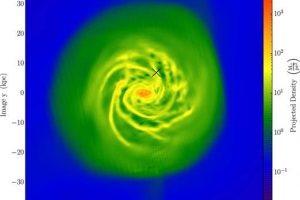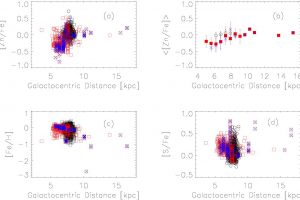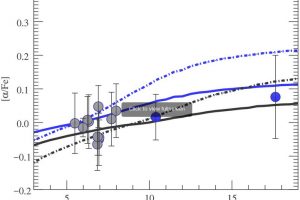Archeo-astronomy with the Gaia-ESO Survey. “The Gaia-ESO Survey: matching chemodynamical simulations to observations of the Milky Way” of B. B. Thompson recently published

Not all the archaeologists do their studies digging holes or classifying artifacts in dusty museums… some of them actually use telescopes… Galactic archeology is a branch of astronomy dedicated to the study of the formation and evolution of the components of our Galaxy (bulge, bar, disc and halo) by analyzing ages, dynamics, and chemical abundances of stars. Not an easy
» Read more

